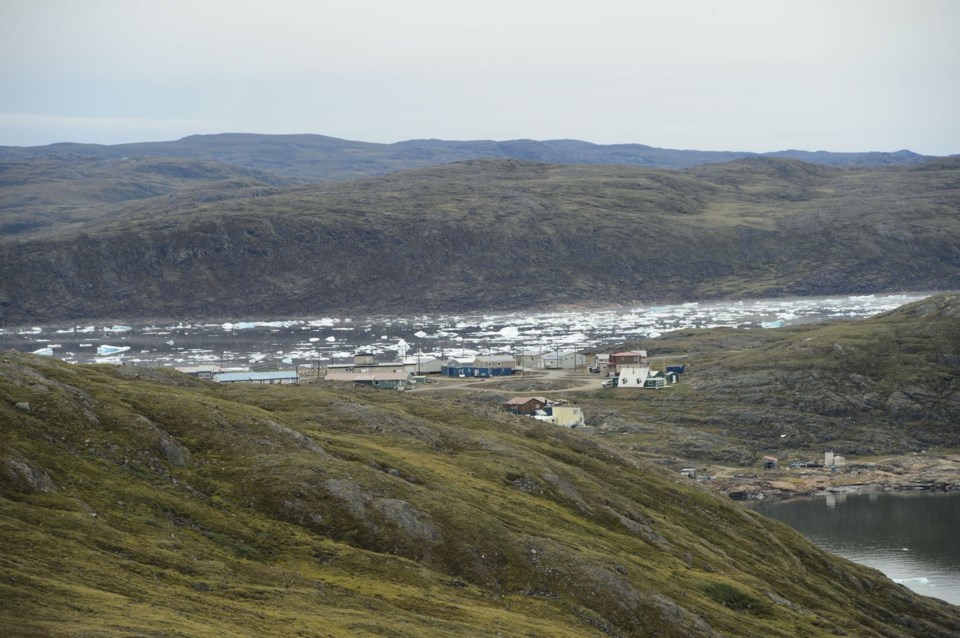Parts of the Arctic tundra are now releasing more planet-warming gases than they absorb, an international study published Tuesday suggests, upending a millennia-old trend and raising concerns about a climate change feedback loop.
The study, published in the peer-reviewed journal Nature Climate Change, said the change appeared to have taken place in "many tundra regions" and called it a "noteworthy shift in carbon dynamics."
Large swaths of the fast-warming Arctic are covered in continuously frozen ground, called permafrost, that in some cases has remained below 0 C for hundreds of thousands of years. Once it thaws, scientists warn long-dead plant matter can decompose and release massive amounts of planet-warming carbon dioxide and methane, generating a feedback loop that further contributes to global warming.
The authors suggest one of the main drivers of the tundra's shift from CO2 absorber to emitter could be thawing permafrost, which covers almost half of Canada's land mass.
"This is not something we can or should ignore," said Sue Natali, a co-author of the study and senior scientist at the Woodwell Climate Research Center, a Massachusetts-based non-profit.
The study says the region comprised of the boreal forest and the Arctic increased how much carbon it can hold in its plants and soils from 2001 to 2020. The uptake appeared to take place at lower latitudes of the boreal forest, where warmer temperatures extended the growing season, Natali said.
Still, about one-third of that area had become a net source of carbon dioxide, mostly in northern permafrost regions. When emissions from wildfires were accounted for, the authors suggested the Arctic-boreal zone, taken as a whole, no longer absorbed a statistically significant amount of carbon emissions.
Of the regions releasing more carbon than they absorb, the study suggests about 20 per cent are in Canada.
While scientists have expected human-caused climate change to thaw permafrost and release CO2, Natali said it's surprising to already see signatures of that change.
"I think to be able to see it over such a large area – to detect it, to monitor it – is quite surprising, and it represents a shift in how this system is functioning," she said in an interview.
"And how this system is functioning is important, both for folks who live on permafrost, but also because these greenhouse gas emissions have global implications."
The study notes the timing of the shift, from a carbon sink to source, is uncertain and may have started prior to 1990.
Human-caused climate change has already increased global temperatures, but that warming is happening several times faster in the Arctic, in part due to another feedback loop: melting sea ice. As sea ice melts, the exposed darker ocean water can absorb more heat, which causes more ice to melt and warms the planet.
As the Arctic warms, permafrost thaws. A 2021 report by an international group of scientists suggested that on humanity's current emissions trajectory, thawing permafrost could release emissions by the end of the century on par with some of the biggest greenhouse-gas emitting nations, such as the United States and China.
Yet those emissions often go unaccounted for, Natali said. It could mean countries are underestimating how quickly they need to cut their direct emissions, such as from burning fossil fuels, in order to meet warming targets and avert some of climate change's most serious effects.
"If you're not doing the math properly ... and you're ignoring permafrost emissions essentially the size of another nation, then you're not going to be able to stay well below two degrees Celsius or 1.5 degrees Celsius," she said.
Research has found that thawing permafrost poses major direct risks to Arctic communities, including in Canada.
Houses, roads, airstrips, communication towers and other infrastructure built on permafrost are at risk of collapse or erosion-related damage, a separate study published last week in Communications Earth and Environment says.
Accelerating erosion rates in Tuktoyaktuk, N.W.T., have already contributed to the need for planned home relocation, the study notes.
Other risks identified by that study include a decrease in water quality, food insecurity, supply chain disruptions and exposure to infectious diseases and contaminants trapped in permafrost, including large amounts of mercury.
The findings outlined in Tuesday's study underscored the importance of monitoring CO2 changes in the far north, where observation stations are limited, Natali said.
"This is an amazing study because of the amount of data that went into it, but there's still so many gaps in our observation network for the north," she said.
This report by The Canadian Press was first published Jan. 21, 2025.
Jordan Omstead, The Canadian Press


